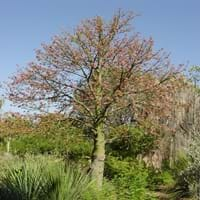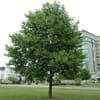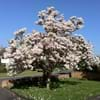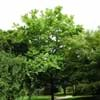Life Span
Perennial
Perennial
Origin
Northeastern United States, Mid-Atlantic United States, Southeastern United States, Central United States
Australia
Types
Ardis, Arnold, Aureomarginatum
Not Available
Habitat
Bluffs, low mountains, Moist Soils, Woodlands
Canopy, Rainforest
USDA Hardiness Zone
5-9
9-13
Sunset Zone
1a, 1b, 2a, 2b, 3a, 3b, 4, 5, 6, 7, 8, 9, 10, 11, 12, 14, 15, 16, 17, 18, 19, 20, 21, 22, 23
H1, H2, 15, 16, 17, 18, 19, 20, 21, 22, 23, 24
Habit
Pyramidal
Spreading
Flower Color
Orange, Light Yellow
Rose
Flower Color Modifier
Bicolor
Bicolor
Fruit Color
Lime Green, Brown
Gold, Brown
Leaf Color in Spring
Green, Light Green
Not Available
Leaf Color in Summer
Green
Green, Blue Green
Leaf Color in Fall
Yellow, Light Yellow, Yellow green
Green, Blue Green
Leaf Color in Winter
Not Available
Green, Blue Green
Leaf Shape
Irregular
Lobulated
Plant Season
Spring, Fall
Spring, Summer, Fall
Sunlight
Full Sun, Partial Sun
Full Sun, Partial Sun
Type of Soil
Clay, Loam
Clay, Loam, Sand
The pH of Soil
Acidic, Neutral
Acidic, Neutral
Soil Drainage
Average
Average
Bloom Time
Late Spring
Late Spring, Early Summer, Summer
Tolerances
Soil Compaction
Wet Site, Drought, Soil Compaction
Where to Plant?
Ground
Ground
How to Plant?
Seedlings
Seedlings
Plant Maintenance
Low
Medium
Watering Requirements
Do Not over Water, Keep the ground moist but not water-logged, Requires regular watering
Do not let dry out between waterings, Requires consistently moist soil
In Summer
Ample Water
Lots of watering
In Spring
Moderate
Moderate
In Winter
Average Water
Average Water
Soil pH
Acidic, Neutral
Acidic, Neutral
Soil Type
Clay, Loam
Clay, Loam, Sand
Soil Drainage Capacity
Average
Average
Sun Exposure
Full Sun, Partial Sun
Full Sun, Partial Sun
Pruning
Prune ocassionally, Remove dead branches
Remove damaged leaves, Remove dead branches, Remove dead leaves
Fertilizers
All-Purpose Liquid Fertilizer, fertilize in spring, Fertilize the soil instead of direct applying, Mulch
All-Purpose Liquid Fertilizer
Pests and Diseases
fusarium canker, nectria canker, yellow-poplar weevil
Root rot
Plant Tolerance
Soil Compaction
Drought
Flower Petal Number
Not Available
Single
Foliage Texture
Coarse
Medium
Foliage Sheen
Matte
Matte
Attracts
Birds
Hummingbirds
Allergy
no allergic reactions
Not Available
Aesthetic Uses
Showy Purposes
Showy Purposes
Beauty Benefits
Not Available
Not Available
Environmental Uses
Shadow Tree, Shelter for wildlife
Air purification
Medicinal Uses
Arthritis, Digestion problems, Fever, Inflammation, Wounds
No Medicinal Use
Part of Plant Used
Whole plant
Seeds, Wood
Other Uses
Food for animals, Grown for shade, Used as Ornamental plant, Used in Furniture
Edible seed, Used as Ornamental plant, Used to make wood shingles
Used As Indoor Plant
No
No
Used As Outdoor Plant
Yes
Yes
Garden Design
Feature Plant, Shade Trees, Street Trees
Feature Plant, Shade Trees, Street Trees, Tropical
Botanical Name
LIRIODENDRON tulipifera
BRACHYCHITON discolor
Common Name
Tulip Poplar, Yellow Poplar
Bush Kurrajong, Pink Flame Tree, Queensland Lacebark
In Hindi
ट्यूलिप पेड़
Pink Flame Tree
In German
Tulpenbaum
Rosa Flame Tree
In French
tulipier
Flame Tree Rose
In Spanish
árbol de tulipán
Pink árbol de la llama
In Greek
δέντρο τουλίπα
Ροζ Φλόγα Δέντρο
In Portuguese
árvore de tulipa
Árvore Chama Rosa
In Polish
tulipanowiec
Różowy Flame Tree
In Latin
Tulipa arbore
Pink arbor flamma
Phylum
Tracheophyta
Magnoliophyta
Class
Magnoliopsida
Magnoliopsida
Order
Magnoliales
Malvales
Family
Magnoliaceae
Sterculiaceae
Genus
Liriodendron
brachychiton
Clade
Angiosperms, Magnoliids
Angiosperms, Eudicots, Rosids
Tribe
Not Available
Sterculieae
Subfamily
Not Available
Sterculioideae
Number of Species
Not Available
Season and Care of Tulip Tree and Pink Flame Tree
Season and care of Tulip Tree and Pink Flame Tree is important to know. While considering everything about Tulip Tree and Pink Flame Tree Care, growing season is an essential factor. Tulip Tree season is Spring and Fall and Pink Flame Tree season is Spring and Fall. The type of soil for Tulip Tree is Clay, Loam and for Pink Flame Tree is Clay, Loam, Sand while the PH of soil for Tulip Tree is Acidic, Neutral and for Pink Flame Tree is Acidic, Neutral.
Tulip Tree and Pink Flame Tree Physical Information
Tulip Tree and Pink Flame Tree physical information is very important for comparison. Tulip Tree height is 1,830.00 cm and width 1,070.00 cm whereas Pink Flame Tree height is 1,220.00 cm and width 610.00 cm. The color specification of Tulip Tree and Pink Flame Tree are as follows:
Tulip Tree flower color: Orange and Light Yellow
Tulip Tree leaf color: Green and Light Green
Pink Flame Tree flower color: Rose
- Pink Flame Tree leaf color: Not Available
Care of Tulip Tree and Pink Flame Tree
Care of Tulip Tree and Pink Flame Tree include pruning, fertilizers, watering etc. Tulip Tree pruning is done Prune ocassionally and Remove dead branches and Pink Flame Tree pruning is done Remove damaged leaves, Remove dead branches and Remove dead leaves. In summer Tulip Tree needs Ample Water and in winter, it needs Average Water. Whereas, in summer Pink Flame Tree needs Lots of watering and in winter, it needs Average Water.





